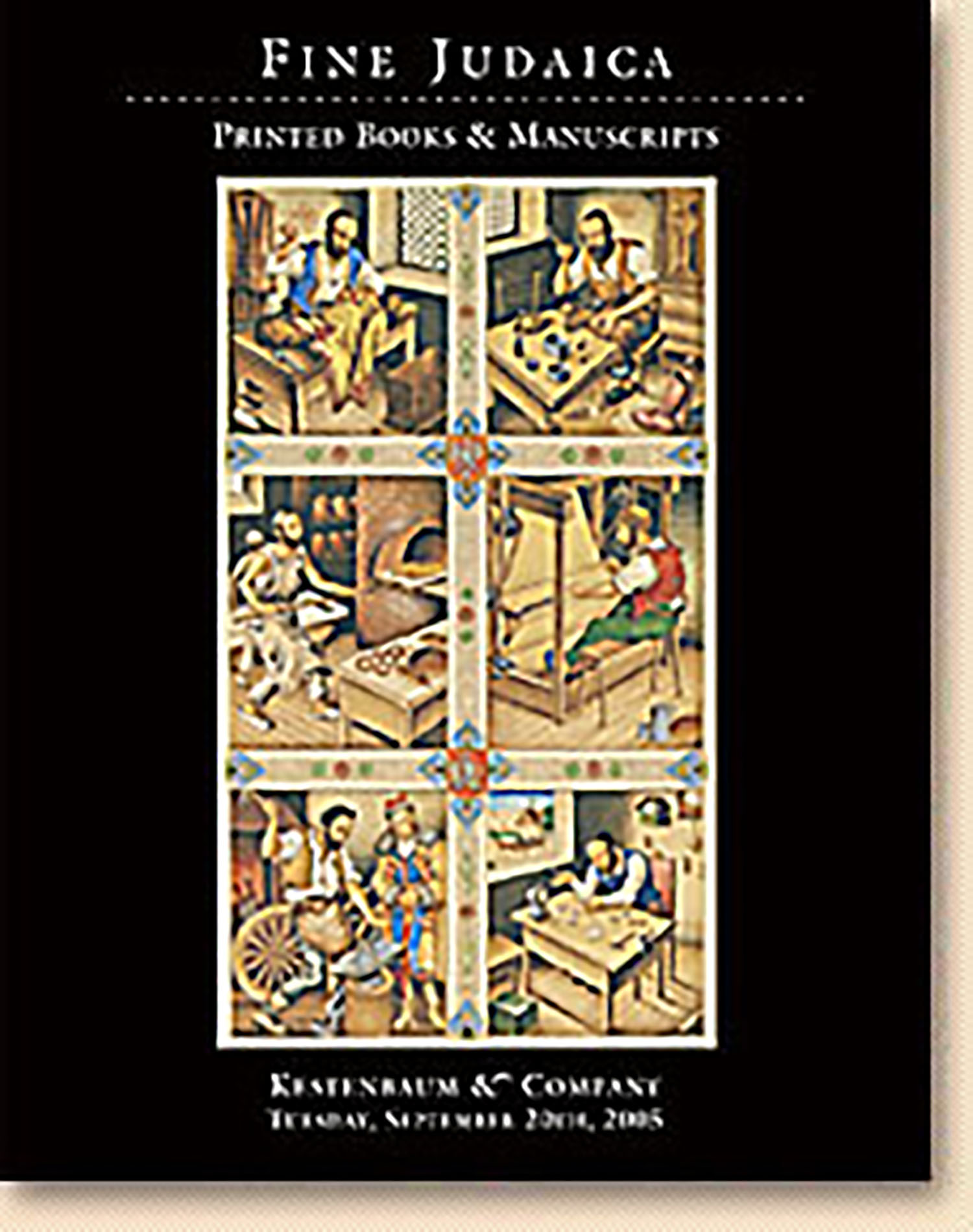DE ROSSI, AZARIAH. Me’or Einayim [“Light of the Eyes”: philosophy of history]

AUCTION 30 |
Tuesday, September 20th,
2005 at 1:00
Fine Judaica: Books and Manuscripts
Lot 16
(AMERICAN JUDAICA)
DE ROSSI, AZARIAH. Me’or Einayim [“Light of the Eyes”: philosophy of history]
Mantua: n.p. 1574
Est: $4,000 - $5,000
PRICE REALIZED $5,500
Fascinatingly, de Rossi writes here that knowledge of the "New World" (his words) was well known by the Rabbis of the Talmud. For as early as King Solomon's time, the Americas were "well known…travellers would come and go…from the Land of Ophir and Parvaim (see Kings I, chap X v.22) - there is no doubt this is the Land of Peru." De Rossi states that the reason the Greek geographer Ptolemy did not depict the American Continent in his maps, was because such knowledge "had disappeared from human memory." (Meor Einaym p. 159a et seq.).
See M. Silber, America in Hebrew Literature, in: Publications of the American Jewish Historical Society, Vol. XXII (1914) pp. 101-37, 114-15 and 121; R.J.H. Gottheil, Columbus in Jewish Literature, in: American Jewish Historical Quarterly (1894) pp.129-37; J. Weinberg, The Light of the Eyes (2001).
“The Me’or Einayim became so important that it rendered its author as one of the greatest, or perhaps the very greatest, of Jewish historians who flourished in the seventeen centuries between Josephus and Jost.” (S. Baron, Azariah de Rossi’s Attitude to Life, in: Studies in Memory of I. Abrahams (1927), p.12).
Azariah de Rossi of Mantua (c.1511 - c.1578) was a member of the Min ha-Adumim family, one of Italian Jewry’s oldest and most distinguished families. Legend has it that their ancestors were brought to Rome as captives from Jerusalem by Emperor Titus. De Rossi’s controversial Me’or Einayim questioned conventional medieval wisdom and introduced fundamental changes in chronology.
De Rossi rehabilitated the works of the Alexandrian philosopher Philo Judaeus, who had been ignored by Jewish scholars for almost 1500 years. He exposed the much vaunted “Jossipon” as an early medieval compilation based on the works of Josephus, though with much falsification. In the spirit of the Renaissance, de Rossi turned to critical analysis and made use of the Apocrypha and Jewish-Hellenistic sources in his study of ancient Jewish history and texts. Most contentiously, he suggested that Midrashic literature was employed as a stylistic device “to induce a good state of mind among readers,” and thus not to be taken literally. Such statements led the Me’or Einayim to be viewed as heresy and it was banned by the rabbinic authorities upon publication. De Rossi re-issued the work the same year, making changes to the offending passages and adding an apologetic postscript. However, some prominent rabbis decreed that those below the age of 25 should be prevented from consulting the book. De Rossi himself was spared chastisement due to his personal observance of Halachic practice.
Our copy contains the “Mahaduroth” (ff. 185-186), which are a series of addenda and corrigenda. These are followed by “Lu’ach ha-Perakim,” a table of contents (ff. 187-188). Also present are the “Hasagah,” the criticism by De Rossi’s fellow Mantuan, R. Moses Provenzali, of the author’s revisionist chronology (ff. 189-190), and De Rossi’s reply to that criticism, “Teshuvah la-Hasagah” (ff.191-194). Mehlman points out that some exceedingly rare copies of Me’or Einayim have an insert of 6 leaves between ff. 186-187 with the heading “Mahadura Sheniyah,” in which De Rossi was forced to fend off further attacks upon his work.
See Carmilly-Weinberger, pp. 210-13; I. Mehlman, Genuzoth Sepharim, (1976) pp. 21-39; S. Simonsohn, History of the Jews in the Duchy of Mantua, pp. 634-637; EJ, Vol. XIV, cols. 315-18.
